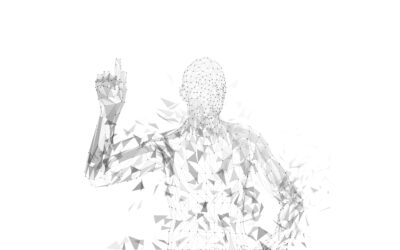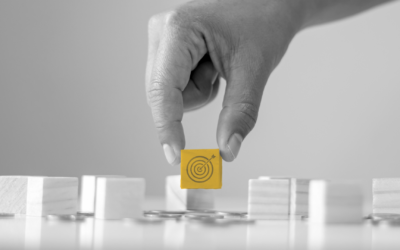What Are The Benefits Of Ideation Workshops?
-
discover
-
Featured
Wanna solve a problem? Get the best ideas all out on the table. Sounds easy, but brainstorming sessions often fail to elevate the best idea. Whether a clash of egos, fear of repercussion from disagreeing with the boss, or just having the wrong people in the room, there’s a better way to collaborate: deploy a workshop. Need help? EX Squared is happy to facilitate!
Key Benefits of Ideation Workshops
- Get ideas out of heads and into the ether
- Ideas breed other ideas and inspire people to speak up
- Have a variety of opinions contributing instead of the same people, having the same conversations
- Empower the quietest to speak up. Their ideas may be the best.
- Help slough off tunnel vision
Problem Types that Ideation Workshops Can Help Solve
- “Why aren’t people wearing their hard hats on the job site?“
- “What should we name our start-up?“
- “Should we go with modern or classic furniture?“
- “Is it possible to put billions of dollars into millions of pockets?“
- “Can you make a fast-growing metropolitan downtown more pedestrian-friendly?“
So, yeah, pretty much any sort of problem can be bettered by workshopping with the right people. The benefits of ideation workshops are structured, whereas brainstorming or whiteboarding is typically chaotic.
Two (or more) more heads are better than one. We’ve all been in long, drawn-out brainstorming meetings that breakdown into conversations about what’s happened on Sunday’s episode of some popular cable show. Brainstorming or collaboration sessions often become unfocused, where the best idea of the day gets lost in the shuffle of the competing voices.
BRAINSTORM TOGETHER
Two (or more) more heads are better than one. We all know this axiom. But, we have all been in long, drawn-out brainstorming meetings that breakdown into conversations about what’s happened on Sunday’s episode of some popular cable show. Brainstorming or collaboration sessions often become unfocused, where the best idea of the day gets lost in the shuffle of the competing voices.
Too often, the loudest or highest-profile opinion in the room starts taking root. Not because it’s the best idea, but because PSYCHOLOGY SHOWS US THAT HUMANS WANT TO FIT-IN WITH OTHERS. We’ll adapt our opinions to fit those of the group to gain temporary acceptance. If done right, brainstorming sessions unlock potential & creativity. If is perform poorly, they just reinforce bad ideas and leave participants feeling like time’s been wasted.
No fear. Innovation Workshops to the rescue!
WORKSHOP VS BRAINSTORMING
Brainstorming is typically a bunch of people, often in the same work-group or product team, coming together to strategize some problem they need to figure out. Though it’s intended to facilitate outside-the-norm thinking, because they are used as triage points on existing situations, they tend to just be faster ways to come to a conclusion the team would have already arrived.
Workshops, whether a design workshop or innovation workshop, are structured, planned events that focus on creating a divergence of ideas from participants, then helping those involved arrive at convergence of a direction moving forward.
Collaboration and output are the goals of both, but a workshop is structured specifically to make this happen. For success, EX Squared follows a set of key steps in our innovation workshop facilitation.
DIVERGENCE & CONVERGENCE IS THE KEY TO SUCCESSFUL INNOVATION
Want a new way to solve a problem? Get different people trying to answer the burning questions.
Divergence is created when different vantage points are brought in and asked to view the problem. Dozens of wonderful, exciting, and yes, sometimes bad ideas get tossed into the mix. But each of those ideas has the ability to spurn another idea and another vantage point. Divergence is the fertilizer. Or water. Or some sort of gardening example.
Teams get tunnel-vision because they see samething. Elephants stay tied to posts they could easily pull out of the ground because when they were small, they lacked the strength. Conditioning causes us to stop pushing because we don’t like the discomfort of failure. That didn’t work yesterday, so why try again? Over time, these restrictions add up and solutions become stale.
TEAM VISION
Convergence happens when participants start to agree on a certain solution. Their point of view begin to align, and now, it’s the best idea in the room, that starts to take root. People from the Vice President of Regional Sales to the Customer Service Representative who was hired two months ago begin to align.
None of this happens by accident. All of it takes deliberate, considered facilitation to succeed. Otherwise, you risk falling back into the chaotic noise of a typical brainstorming session. The outcome of that is anyone’s guess.
6 Steps for a Successful Workshop
How do you make this all happen? Workshops succeed by letting imaginations run within a structured environment. Structure and a dash of discipline create the right sort of tension needed for solutions to flourish.
GET THE RIGHT PEOPLE
Step outside or your department. Go up and down the company ladder. Get the Director of Safety as well as the HR person who files the accident report. The Foreman on the job and the Safety Expert who goes out to check installations. Have a decision maker in the room, because they have to drive the solution forward when it comes to time & cost.
HAVE A GOOD REASON TO BE THERE
Want to get people in the room, have a good reason. Some sort of purpose. A goal in mind is necessary, otherwise, everyone will flounder. You can be broad, but you need to have some idea of why the Avengers are Assembling.
Have a facilitator (and listen to that person)
Facilitators are indispensable for workshops. They keep people on task. Facilitators keep the agenda moving forward when individuals want to go down tangential roads. And, very importantly, they keep some level of equality of ideas in.
Make Voting Anonymous
Eventually, ideas will be voted on, and when that happens, do your best to have that be anonymous. EX Squared uses a dotmocracy technique. Every participant gets a sheet of sticker-dots, and places them on the ideas they feel work best. Same color dots for everyone make this work even better.
Give Yourself Enough Time
How much is enough? Depends on what you’re trying to solve and the people in the room. We’ve done workshops as short as 2 hours, and as long as 5 days.
Follow a Structure, Framework, or Agenda
Know how long you’ll be in the room. Know how long you’ll be present in each activity. Outside facilitators will bring their own specific recipe for this, but, an inside facilitator can find tons of guidance online.
Talk with us
EX Squared is a creative technology agency that creates digital products for real human beings.




